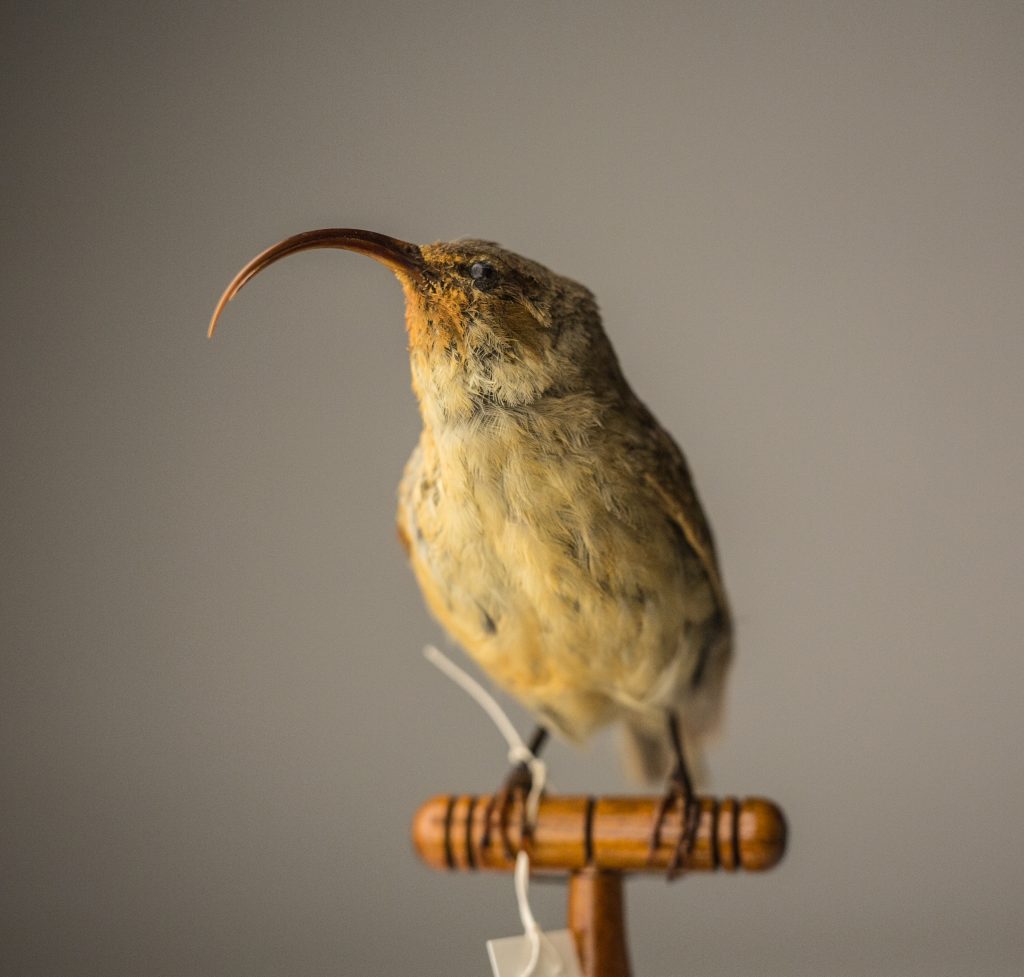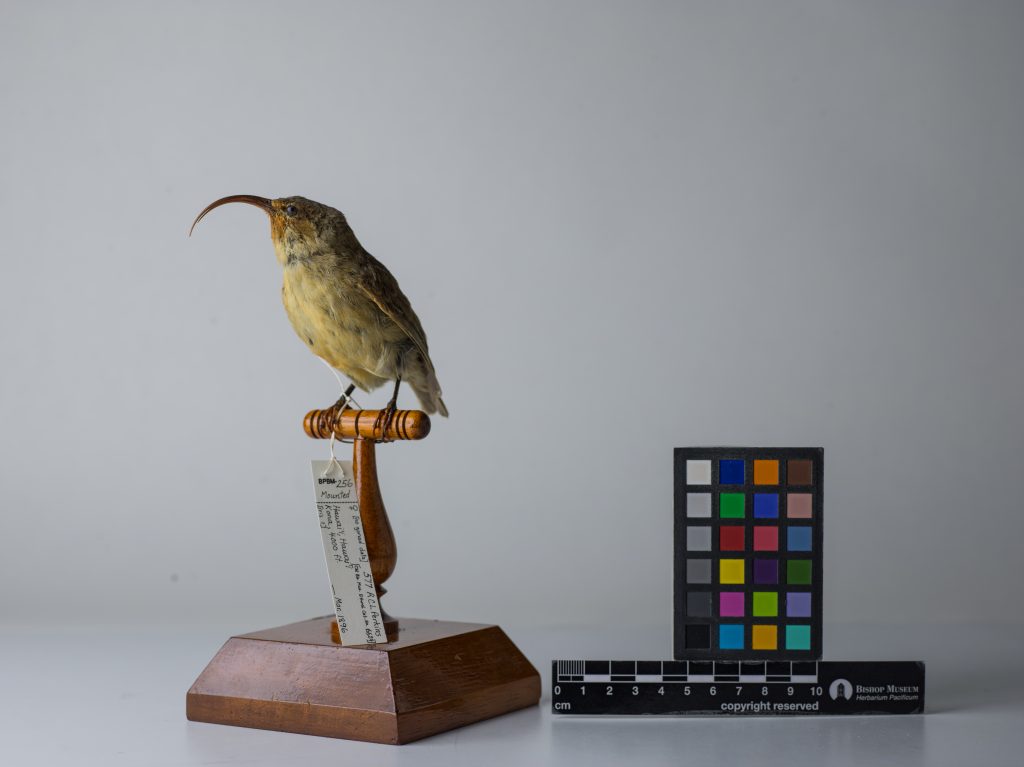Lesser ʻAkialoa

Names
- Common Name: Lesser ʻakialoa
- Scientific: Akialoa obscura
Song
No recordings available.
Conservation Status
Extinct. Last confirmed sighting in 1903.
Species Information
The lesser ʻakialoa is a medium-sized, yellowish honeycreeper that was endemic to Hawaiʻi Island. The females had a duller, olive hue. There were different species of ʻakialoa across the southwest Hawaiian Islands. Originally, the species were lumped. As time progressed, the differences between the ʻakialoa across the islands were considered to be significant enough to classify them as their own species (Pratt 2014). Hawaiʻi Island’s lesser ʻakialoa, Akialoa obscura, has a more curved beak than the other ʻakialoa. Because of the lesser ʻakialoa’s beak shape, they were once considered a subgenus of Heminganthus (Pratt 2014). This beak enabled them to eat the nectar of native flowers such as those from ʻōhi‘a trees, in addition to bugs. The once commonly seen honeycreeper on Hawai’i Island is now extinct, last seen in 1903.
Distribution
Hawaiʻi Island
Habitat
This honeycreeper could be found in mid to high elevation forests on Hawaiʻi Island (Pyle & Pyle 2017).
Threats
Causes of the decline of this species are unknown. However, lesser ʻakialoa likely were susceptible to the same factors that threaten other native Hawaiian forest birds, including loss and degradation of habitat, predation by introduced mammals, and disease. Pyle & Pyle 2017 noted that its decline was likely due to “anthropogenic pressures.”
Photos
Additional Resources
Atkinson, C. T., & LaPointe, D. A. (2009). Introduced Avian Diseases, Climate Change, and the Future of Hawaiian Honeycreepers. Journal of Avian Medicine and Surgery, 23(1), 53–63. http://www.jstor.org/stable/27670709
Pratt, H. D. 2005. The Hawaiian honeycreepers: Drepanidinae. Bird Families of the World.Oxford, Oxford University Press.
Pratt, H. D. (2014). A consensus taxonomy for the Hawaiian honeycreepers. Occasional Papers of the Museum of Natural Science, Louisiana State University, 1(85), 1.





